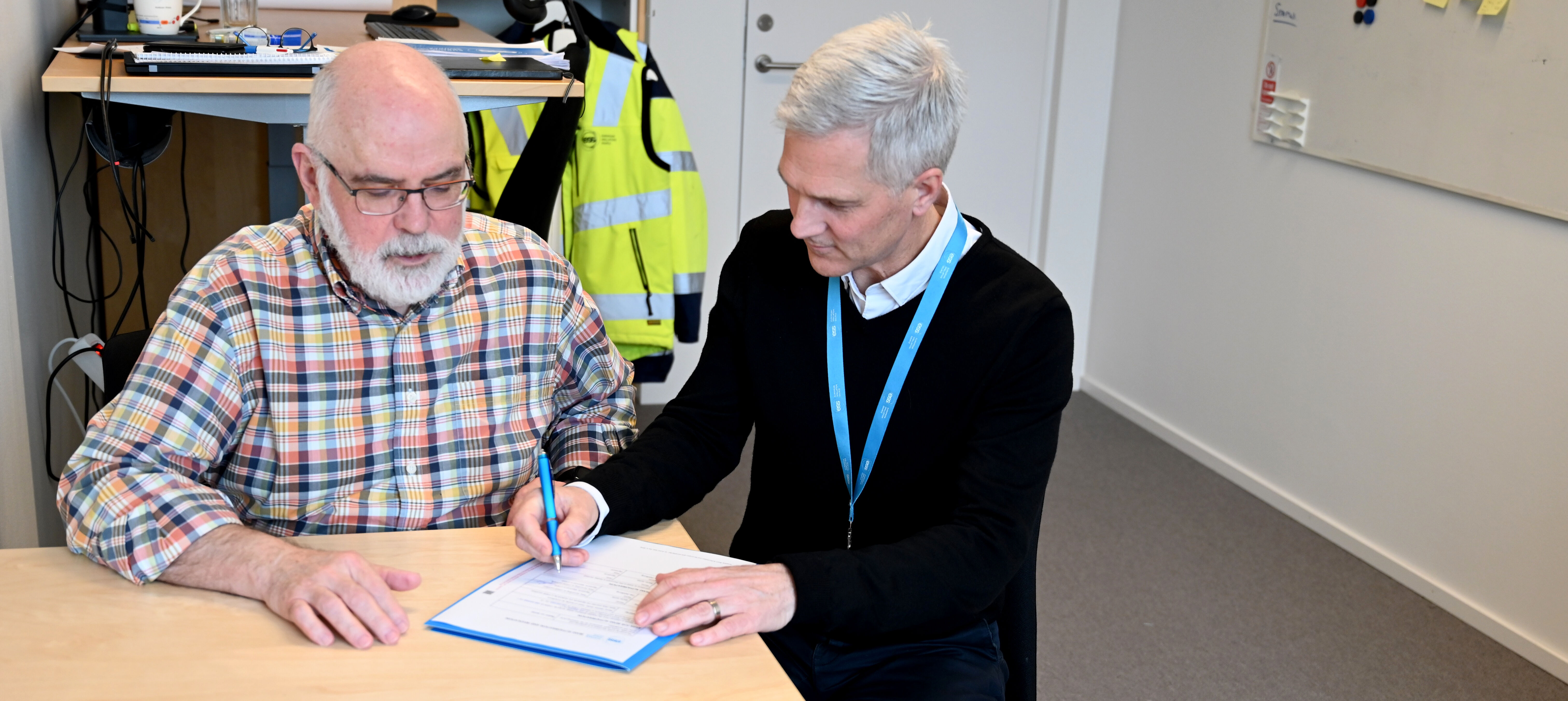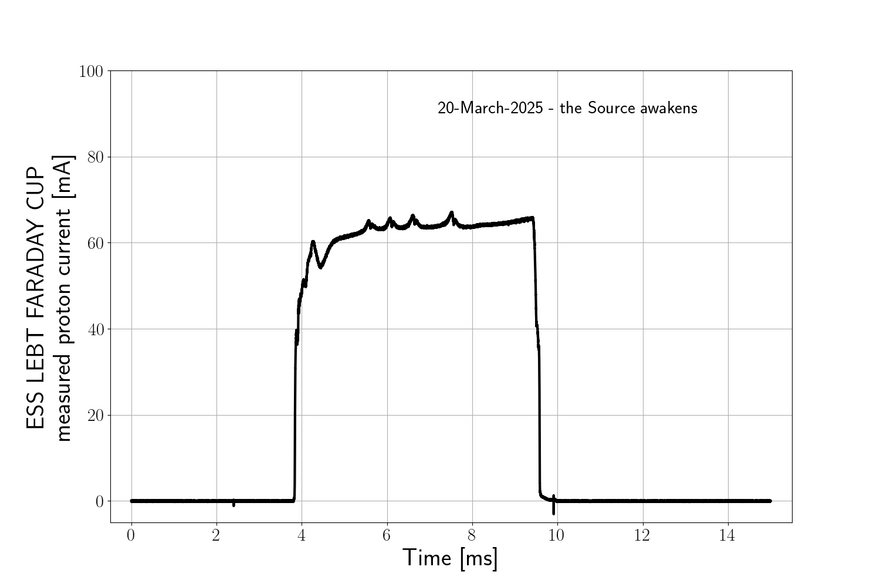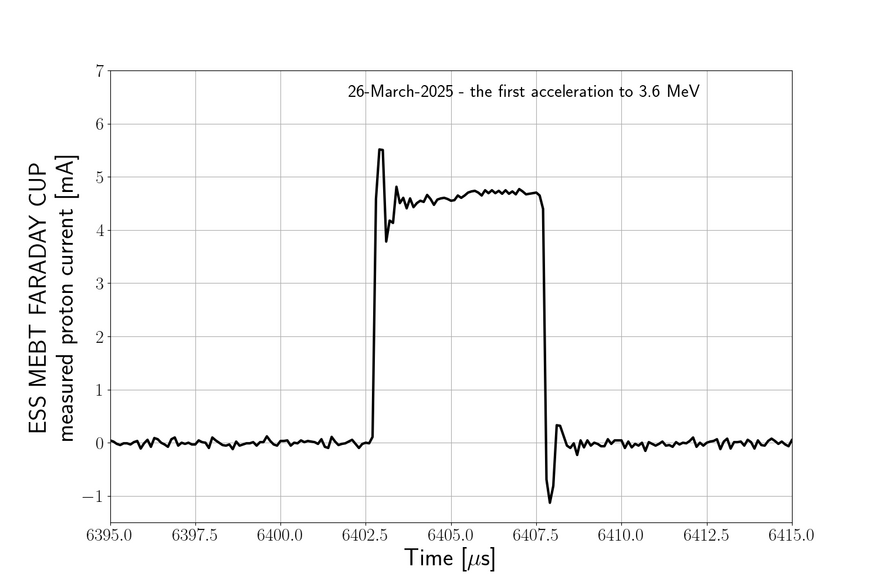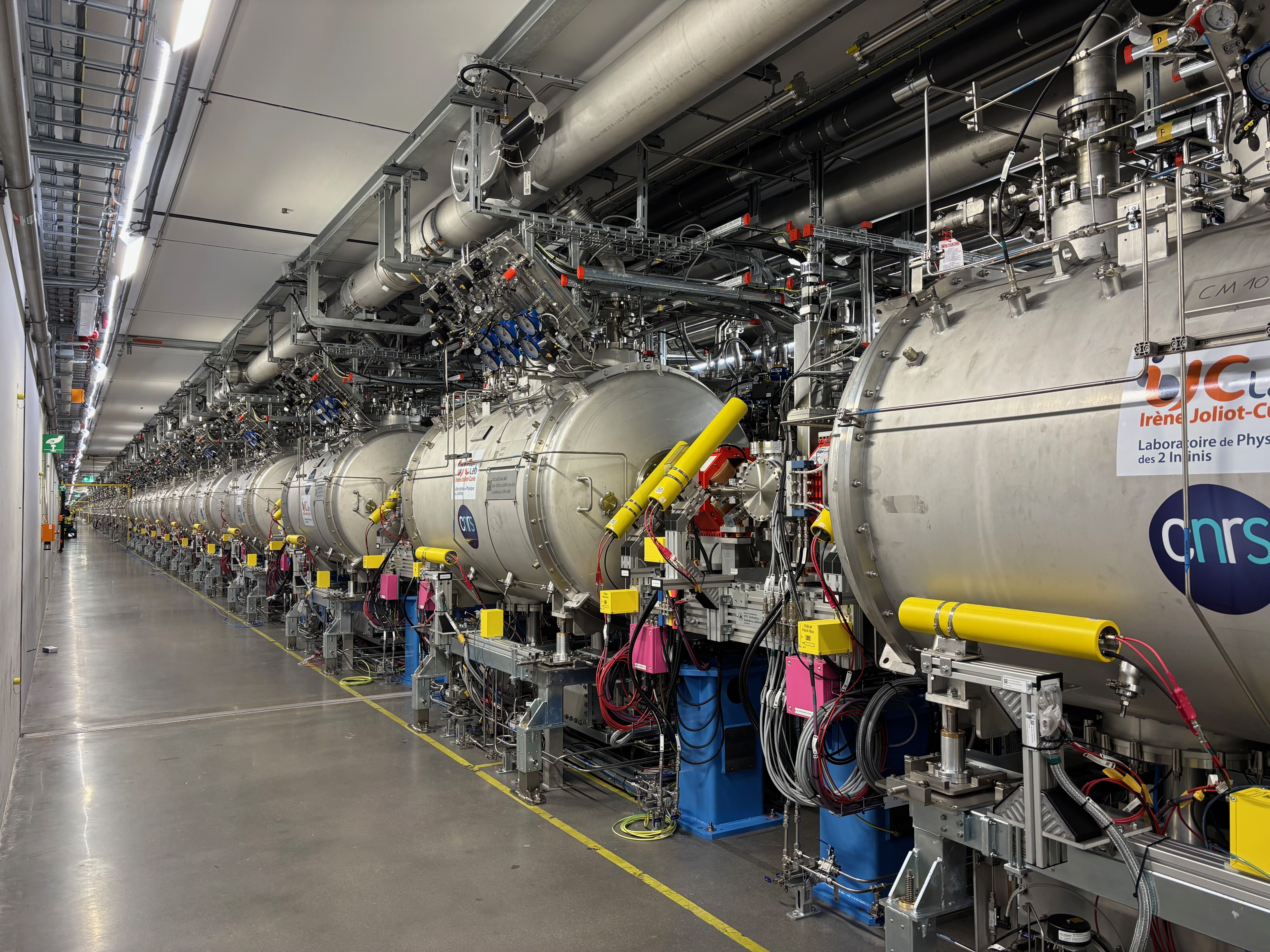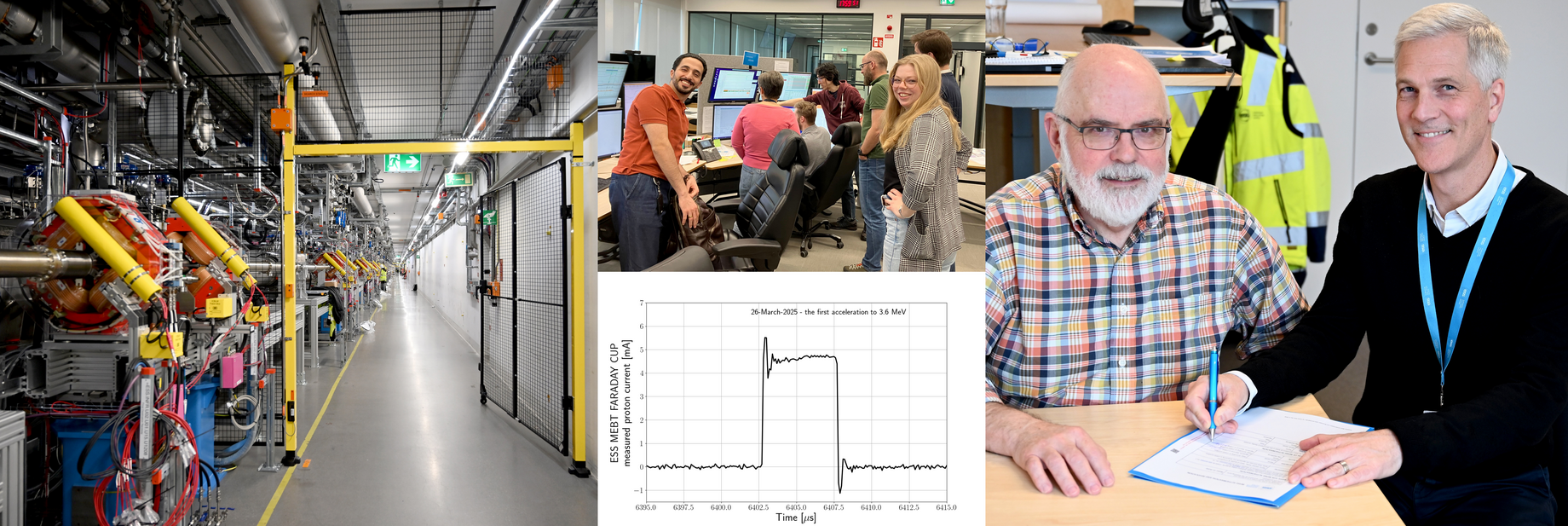
In a major milestone for ESS, beam commissioning has started in the linear accelerator (linac). For the first time, a proton beam will be sent all the way to the end of the accelerator to a dedicated tuning beam dump. This step is crucial for preparing the facility to deliver high-power proton beams to the target later this year, where neutrons will be produced for scientific research.
The final green light from the Swedish Radiation Safety Authority (SSM) came after the successful completion of all formal safety reviews, and the system permit and beam authorisation were signed by ESS Technical Director Kevin Jones and Head of Environment, Safety, Health and Security Ola Dahlborg.
The ESS accelerator is 600 metres long and will eventually send protons at high speeds into a target to create neutrons through a process called spallation. The current phase, called “Beam on Dump”, involves gradually testing and fine-tuning all systems to safely guide and accelerate the beam through the full length of the tunnel before progressing to higher power levels.
This follows the successful commissioning of the Normal Conducting Linac (NCL) up to DTL4 in 2023. The remainder of the linac is now undergoing beam testing for the first time, with the first Beam on Dump scheduled for April.
Commissioning begins with low-power operation in the the Normal Conducting Linac (NCL). To maintain safety, control and flexibility, multiple beam stops are installed along the linac. These include Faraday Cups in the Low Energy Beam Transport (LEBT), Medium Energy Beam Transport (MEBT) and Drift Tube Linac (DTL), as well as an Insertable Beam Stop in the Spoke section (SPK). These systems allow for controlled beam extraction and gradual acceleration over increasing distances.
Initially, commissioning is conducted in probe beam mode, using tiny fractions of the beam to verify and validate critical systems. Gradual increases in pulse length, repetition rate and beam current will ultimately bring the accelerator to its nominal operational power. For this stage, the maximum beam power will be limited to 12.5 kW.
With all accelerator and infrastructure support systems now integrated for the first time, careful testing and precise control are essential. Key focus areas include:
- Machine Protection System (MPS): Following a successful Final Integration Test (FIT) without beam, the MPS will now be validated with beam.
- Verification of Critical Systems: Devices such as Beam Current Monitors (BCMs) and Beam Position Monitors (BPMs) will be verified under beam conditions.
- Accelerating Cavities: All cavities in the NCL and Superconducting Linac (SCL) will be brought up to nominal gradients and duty cycles.
- Timing and Synchronisation: Phases and amplitudes of accelerating cavities will be adjusted to ensure RF pulses are delivered exactly when required.
- Systems for Higher Power: Equipment required for increasing pulse length and beam current will be validated to enable gradual ramp-up.
- Operational Readiness: This phase also allows teams to improve tools, refine procedures and build operational expertise, laying the groundwork for reliable long-term performance.
This achievement is the result of close collaboration between the ESS Accelerator, Integrated Control System (ICS) and Operations teams, and has been made possible thanks to our many In-Kind Partners from the 13 ESS member countries, who have contributed essential components and expertise.
Beam commissioning of the accelerator is a fundamental step towards achieving ESS’s scientific mission. Each stage systematically validates the linac’s performance, ensuring a safe and reliable transition to full-power operations. By following a carefully planned approach, risks are minimised and system performance optimised, laying the groundwork for the world-class neutron science that ESS will deliver.
Over the coming months, commissioning will continue to prepare the accelerator for full operation. Once beam commissioning to the dump is complete, the next phase - Beam on Target (BoT) - will begin, initiating spallation and delivering the first neutrons to ESS instruments.

























